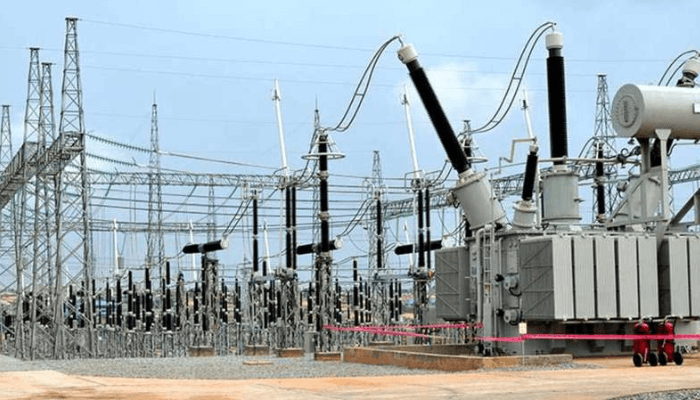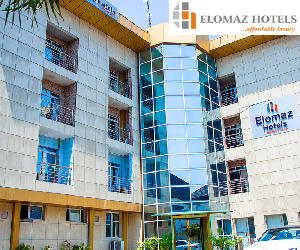Nigeria’s national grid continues to face frequent collapses, compounded by vandalism of power infrastructure. These challenges demand an urgent exploration of alternative energy sources to sustain both residential and business consumption.
Power is the backbone of any thriving economy. Yet, Nigeria, once the “Giant of Africa,” now grapples with a deteriorating energy sector that threatens its economy and development. Decades of poor leadership, mismanagement, and outdated infrastructure have turned the nation’s energy situation from a symbol of pride into a crisis of national concern.
A Nation in Energy Crisis
Electricity supply in Nigeria has been anything but stable. The current installed capacity of 7,876MW falls short of the demand, with less than 4,000MW available for daily use. This inefficiency has led to widespread load shedding and an overreliance on personal generators, a costly and unsustainable alternative.
Nigeria’s power supply has been marred by a multitude of structural, technical, and security challenges. These issues have resulted in frequent blackouts, load shedding, and a lack of reliable electricity for households and businesses. Below, we delve deeper into the key factors responsible for the nation’s energy crisis:
1. Outdated Facilities
Many of Nigeria’s power plants and generation stations are over 20 years old, with some dating back to the early post-independence era. These aging facilities operate well below their designed capacities due to wear and tear, as well as the absence of modern upgrades. Without significant investment in refurbishment, these plants struggle to meet the current energy demands of a rapidly growing population and economy.
This has grossly reduced efficiency in power generation, frequent breakdowns, and an inability to sustain continuous electricity supply.
Thermal power plants, which account for over 80% of Nigeria’s energy mix, frequently fail due to outdated turbines and other critical equipment.
2. Inadequate Maintenances
Maintenance is essential for ensuring the reliability of power infrastructure, but Nigeria’s power sector suffers from insufficient funding and delays in routine upkeep. Key components such as transformers, turbines, and grid lines are often left unrepaired or poorly serviced, leading to frequent breakdowns.
This has Increased frequency of power outages and prolonged downtimes during repairs.
For example the Egbin Power Plant, one of Nigeria’s largest, often operates below capacity due to maintenance-related delays, despite its potential to generate 1,320MW.
3. Transmission Bottlenecks
The national grid’s transmission system is a significant weak point in the power supply chain. With a wheeling capacity of just 4,000MW, the grid cannot handle the country’s electricity needs, which are estimated to exceed 13,000MW. Moreover, many transmission lines are outdated and incapable of efficiently distributing power from generation plants to distribution companies.
Energy losses during transmission, inability to distribute generated power effectively, and frequent load shedding.
The collapse of key transmission lines in 2022 led to a nationwide blackout, highlighting the fragility of the grid.
4. Security Challenges
The vandalization of power infrastructure has become a recurring problem in Nigeria. Power lines, transformers, and other critical assets are frequently targeted by vandals seeking to sell copper wires and other materials for profit. In addition, a lack of adequate surveillance and security measures exacerbates this issue.
This has increased costs for repair and replacement, further straining the limited resources of power companies. This leads to prolonged outages and reduces investor confidence in the sector.
Read Also: Gunmen kill 4 vigilante members, injure 7, set vehicle ablaze in Anambra Sit-At-Home violence
In 2023, multiple transmission towers in the Niger Delta region were vandalized, cutting off power supply to millions of households and businesses.
The persistent energy crisis in Nigeria is more than just a power issue—it’s a national emergency that has deep economic and social implications. The lack of reliable electricity affects every facet of daily life, stalling economic growth, inflating costs, and widening the inequality gap.
1. Inflation
At an alarming rate of 33.8%, inflation in Nigeria has become a significant challenge, exacerbating the cost of living for millions of Nigerians. The energy crisis plays a central role in driving this inflation, with higher fuel prices directly impacting transportation, production, and the prices of goods and services.
– Fuel Dependency: The removal of fuel subsidies and the resultant hike in petrol prices have made it costly to transport goods, which trickles down to consumers.
– Impact on Businesses: SMEs and manufacturers, who rely on expensive self-generated electricity, are forced to pass these costs onto their customers, further inflating prices.
2. High Costs of Self-Generated Power
With the national grid failing to provide adequate electricity, over 40% of Nigerian households and countless businesses rely on petrol and diesel generators for power. While these generators offer a temporary solution, their operational costs are exorbitant, significantly burdening users.
– Household Expenses: A typical Nigerian household spends a substantial portion of its income on fuel for generators, often at the expense of other essential needs like education and healthcare.
– Economic Strain: Collectively, Nigerians spend billions annually on generator maintenance and fuel, a cost that could otherwise be invested in economic development if the power grid were functional.
– Environmental Impact: The widespread use of generators also contributes to noise and air pollution, adversely affecting urban living conditions.
3. Slowed Economic Development
The energy crisis is a major bottleneck to Nigeria’s economic progress, particularly in the industrial and agricultural sectors, which are heavily reliant on electricity.
– Industrial Impact: Frequent power outages disrupt manufacturing processes, increase production costs, and reduce output. Many companies are forced to downsize or relocate to more energy-reliable regions, further diminishing job opportunities.
– Agricultural Setbacks: Rural areas, where agriculture is a primary livelihood, are disproportionately affected. Inadequate power supply hampers irrigation systems, food processing, and storage, leading to increased food wastage and lower productivity.
– Stunted Rural Development: The lack of electricity in rural areas not only slows economic activity but also limits access to modern conveniences, education, and healthcare, perpetuating poverty cycles.
Broader Social Implications
Beyond its economic effects, the energy crisis has far-reaching social consequences:
– Reduced Quality of Life: Families endure long hours of darkness, reduced access to clean water (due to electricity-dependent pumps), and diminished educational opportunities for children.
– Increased Inequality: The crisis widens the gap between the rich and the poor, as wealthier individuals can afford alternative energy solutions, while the less privileged are left to suffer the brunt of the situation.
Emerging Solutions: Alternative Energy
Despite these challenges, adversity often births innovation. Nigeria is exploring sustainable energy options, with solar energy and compressed natural gas (CNG) taking center stage.
Solar Energy
Nigeria’s solar energy capacity reached 37 megawatts in 2022, reflecting its potential to address electricity shortages. Solar power is increasingly seen as a viable alternative due to its renewability and minimal environmental impact.
Compressed Natural Gas (CNG)
The federal government, under President Bola Tinubu, has commissioned 12 CNG conversion stations, with CNG now sold at ₦230 per kilogram. While this is cheaper than petrol, the initial cost of converting a car’s fuel system to CNG—₦1.5 million—remains a significant barrier.
Hydropower
Nigeria’s hydropower sector, anchored by the Kainji Dam, remains critical. However, it contributes only 17.59% to the country’s energy mix, highlighting the need for diversification.
Wind and Renewable Energy
The future of Nigeria’s energy lies in a diversified mix of renewable sources, including wind turbines and solar farms, capable of bridging the gap of over 9,160MW between current and future power demands.
The Way Forward
Nigeria is endowed with abundant natural resources, yet the potential remains untapped. To address its energy crisis, the nation must:
1. Invest in modernizing and expanding the national grid.
2. Secure infrastructure against vandalism.
3. Promote the adoption of renewable energy sources.
4. Encourage public-private partnerships to fund energy projects.
5. Implement energy policies that incentivize sustainable practices.
The energy crisis in Nigeria is a ticking time bomb. With demand increasing exponentially and supply lagging, a robust, long-term solution is essential. Transitioning to alternative energy not only holds the promise of resolving Nigeria’s power challenges but also offers a cleaner, greener future.
Stay tuned for Part 2, where we delve deeper into the economic and environmental benefits of alternative energy sources.






